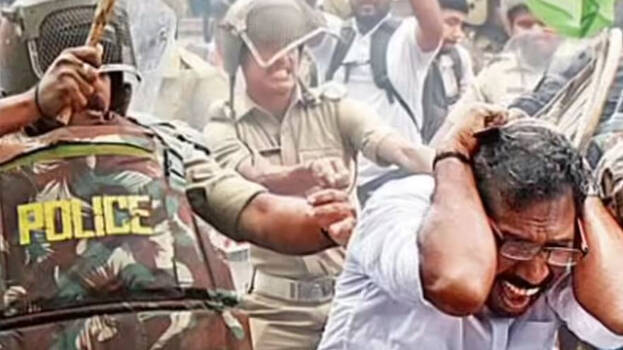

THIRUVANANTHAPURAM: Despite repeated warnings to the police that the use of lathis to attack the heads of protesters, which was adopted during the British era, should not be practised, they are not changing their habit. No matter which government is in power, the police will beat the protesters on the head with lathis. The latest incident was the beating of MP Shafi Parambil in Kozhikode. It was the British who implemented training to beat the enemy on the head, to poke their mouth and navel, and to beat the neck with lathis to subdue them. This training continued until 5 years ago.
According to Section 79 of the Police Manual, police officers can use lathis for defensive purposes as part of the execution of their duties. However, the government has suggested that lathi charges should be limited to below the waist and has been trained in camps. In May last year, the Home Department had stated in writing that lathi charges, including on the heads of protesters, are not systematic and that the DySP will investigate complaints if anyone is injured in a lathi charge.
What the law states
If protesters create a public nuisance, they must be arrested. If they attack or try to kill the police, they can be subdued by force. Lathi-charge is not allowed unless violence is caused after water cannon and tear gas are used. A case can be filed against the police if they hit unarmed protesters on the head or cause injuries. Force should not be used except for arrest or to disperse a violent crowd, and that too only when necessary. Force should not be used after provocation. The National Human Rights Commission had earlier directed the DGP to take action against policemen who hit them on the head.
Changes in the syllabus of lathi charge
Repeated head blows